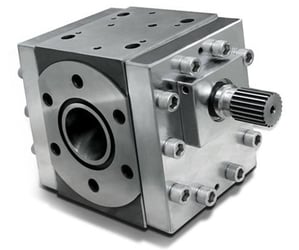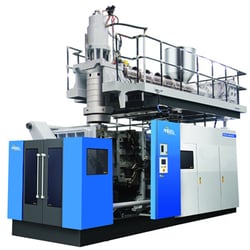
All plastics processors at some point will face the issue of degradation of plastic.
The primary causes are the result of excessive residence times where the material lingers too long, and/or exposure to too much heat supplied by an element or heater bands and from shear forces taking place within. The compatibility of materials including the compounded resins and metals used can also be a source for degradation. Regardless of the cause, the result is the same: the original properties of the polymer become compromised. This leads to scrap and a high potential for producing defective products.
Here are some key points to prevent degrading your thermoplastic materials:
- 1.) Avoid over-drying materials, especially any hygroscopic type thermoplastic resins(including nylon). When a job calls for a resin that absorbs moisture from the air, have adequate drying capabilities and time in advance on hand. Follow the recommended drying time and temperatures. Anything in excess will result in burned, degraded material before its even processed.
- 2.) Match the extruder size to the job! To avoid excess residence time, product volume requirements and line speeds/cycle times should use up as much of the extruder's maximum output as possible, while making good, sale-able product.
- 3.) Know in advance what type of screw is in the extruder. Left unchecked, a high shear screw can cause rapid degradation of any shear sensitive resins while running under recommended maximum output.
- 4.) Check that all thermocouples are inserted correctly and functioning properly. Gaps between the tip and the metal surface can send erroneous feedback to the controller resulting in a supply of more heat than was intended. A runaway heater band will burn material as it moves through the affected zone.
- 5.) Check your incoming supply of resin material certifications. Make sure they are consistent and within specification. If running known off-spec resins or regrind with multiple heat histories, it is important to monitor the product output and heighten awareness for the first signs of degradation. Adjust percentages used, along with time and temperature accordingly.
- 6.) Avoid incorporating hang ups and dead zones for flow in the extruder system design. This includes the screw geometry, along with barrel type and conditions. Improper designs and excess wear can lead to nagging problems.
- 7.) Minimize lengths of any auxiliary tooling or plumbing between the extruder exit and die. Pressure drops in these areas can result in lower flow which equates to greater residence time. Also, be sure to manage the heats in these zones accordingly.
- 8.) Minimize dead spots or hang up in the die design itself. Material should flow uniformly and balanced throughout. Consult flow simulation software before cutting metal chips and follow the principle of “steel safe.” Maintaining the ability to tweak the die as needed during preproduction development runs.
- 9.) Check compatibility of the resin with the type of metal used in the entire extrusion system. Some polymers will require certain tool steels or specialized coatings on the metal surfaces to prevent any adverse reactions.
- 10.) Use a heat stabilized material when going into a shutdown and again upon start-up. Minimize the amount of oxygen or air in the barrel itself when screw speed is idled at these critical times.
- 11.) Maintain your extrusion system. Periodic cleaning and preventative maintenance will reduce the likelihood of and eliminate any degradation that has already occurred because of factors beyond your immediate control.
Learn more about how to reduce production downtime and protect your profits with a purging compound.







Comments